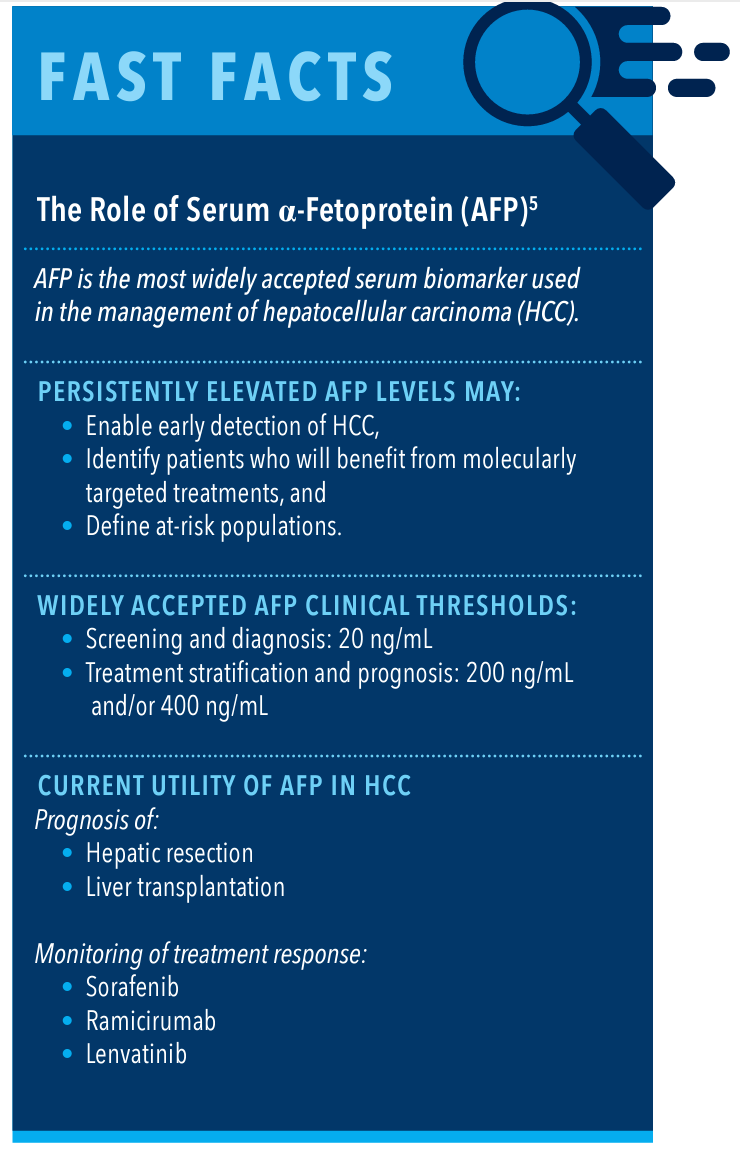Unlocking the Potential of Targeted Treatment Options for HCC
Targeted agents have restructured the treatment paradigm for patients with advanced hepatocellular carcinoma. The present challenge is to identify the patients most likely to benefit from frontline treatment regimens.
Lewis R. Roberts, MBChB, PhD

Targeted agents have restructured the treatment paradigm for patients with advanced hepatocellular carcinoma (HCC). The present challenge, according to Lewis R. Roberts, MBChB, PhD, is to identify the patients most likely to benefit from frontline treatment regimens.
In May 2020, the FDA approved the combination of atezolizumab (Tecentriq) and bevacizumab (Avastin) for the treatment of patients with unresectable or metastatic HCC who have not received prior systemic therapy. Findings from the phase 3 IMbrave150 trial (NCT03434379) demonstrated that atezolizumab plus bevacizumab led to a 42% reduction in the risk for death compared with sorafenib (Nexavar) (HR, 0.58; 95% CI, 0.42-0.79; P = .0006). The combination also was associated with a 41% reduction in the risk of disease progression or death versus sorafenib (HR, 0.59; 95% CI, 0.47-0.76; P < .0001).1
In previously released data, independent reviewers determined that, at a me-dian follow-up of 10.3 months, atezolizumab plus bevacizumab elicited an overall response rate (ORR) of 65% among 23 evaluable patients. Additionally, the responses were observed across patient subgroups defined by etiology, geography, baseline α-fetoprotein (AFP) levels, and extrahepatic spread. The 65% ORR comprised a 4% complete response rate and a 61% partial response rate. Additionally, 7 (30%) patients had stable dis-ease and 1 (4%) had progressive disease. A disease control rate of at least 6 months was reported for 16 (70%) patients.2
The combination is the new standard of care, Roberts said, adding that any patient assigned to this regimen should undergo endoscopy to screen for varices.
“It’s maybe somewhat controversial still, but in the studies that have been done that included bevacizumab, there’s always been some risk that has been identified for people who have esophageal varices, because many of these patients have underlying chronic liver disease and portal hypertension,” said Roberts, a consultant physician and head of the Hepatobiliary Cancer Laboratory at Mayo Clinic in Rochester, Minnesota. “So if they have varicose veins in the esophagus as well and are at risk of bleeding, then in a number of the studies that have included bevacizumab, we’ve seen mortality from bleeding var-ices. The general consensus has been that everybody you want to put on atezolizumab/bevacizumab should be screened with endoscopy to be sure they don’t have either varices or high-risk var-ices that look like they might be at risk of bleeding.”
Roberts said that, generally, patients who are eligible for atezolizumab/bevacizumab in the first line should receive the combination, rather than sorafenib or lenvatinib (Lenvima) mono-therapy. The combination of nivolumab (Opdivo) and ipilimumab (Yervoy) is approved in second line, but investigators have begun exploring nivolumab, a PD-1 inhibitor, as monotherapy in the first line.
In topline results from the phase 3 CheckMate 459 trial (NCT02576509) published in June 2019, nivolumab failed to show superiority in overall survival (OS) compared with sorafenib in the first line for patients with advanced HCC (HR, 0.85; 95% CI, 0.72-1.02; P = .0752). Nivolumab did demonstrate a trend toward improved OS.3
However, in updated findings presented at the European Society for Medical Oncology World Congress on Gastrointestinal Cancer in July 2020, the 33-month OS rate favored nivolumab, 29% versus 21% over sorafenib.4 Lead author Bruno Sangro, MD, PhD, director of the Liver Unit at Clínica Universidad de Navarra and a professor of medicine at the Clínica Universidad de Navarra School of Medicine in Pamplona, Spain, told OncologyLive® that patients assigned to nivolumab experienced a prolonged survival benefit regardless of PD-L1 status and viral etiology. The updated data confirmed nivolumab’s induced fewer serious adverse effects (AEs) and better-preserved liver function compared with sorafenib.
“I think people can consider using nivolumab in some circumstances if for some reason the patient is not considered a candidate for atezolizumab/bevacizumab,” Roberts said. “Why would you consider using nivolumab over sorafenib or lenvatinib? Mostly because the adverse effect profile of nivolumab is substantially better than from TKIs [tyrosine kinase inhibitors] such as sorafenib or lenvatinib. Sorafenib and lenvatinib can cause diarrhea, hand-foot syndrome, hyper-tension. Particularly, the diarrhea and hand-foot syndrome can be quite severe adverse effects.”
The Role of Serum α-Fetoprotein (AFP)5

Understanding Who Responds to Treatment
Roberts said investigators are exploring the role of serum AFP and the role it plays in response to treatment. Ramucirumab (Cyramza), for example, was approved by the FDA in 2019 for patients who have an AFP level greater than or equal to 400 ng/mL and have been previously treated with sorafenib. Findings in the double-blind phase 3 REACH2 trial (NCT02435433) showed that patients at or above that AFP level assigned to the VEGF2 antagonist had superior OS (8.5 vs 7.3 months; HR, 0.71; 95% CI, 0.53-0.95; P = .0199) and progression-free survival (2.8 vs 1.6 months; HR, 0.45; P < .0001) compared with those assigned to placebo. Overall response rate also favored the ramucirumab arm (4.6% vs 1.1%).5
“But then there’s also some studies that are beginning to come out where if the patient has high AFP, people are putting them on another regimen and then observing how quickly the AFP drops,” Roberts said. “And if we see a rapid drop in AFP, they’re saying, ‘Wonderful, looks as though my patient is responding.’ ”
If the patient does not have a decline in AFP within the first 6 weeks of treatment, Roberts recommended switching to another treatment. “[Investigators] are using the dynamic change in AFP to make the decision about responsive therapy earlier rather than later now that there are other treatment options available,” he said.
Roberts said that there is increasing evidence that some patients harbor specific mutations, such as β-catenin mutations, that display “desert-like features,” meaning they appear to exclude lymphocytes. “It’s almost like they put up a block to immune attack,” Roberts said.
The hypothesis is that these patients are less likely to respond to immune checkpoint inhibitors. Roberts added that it appears physicians should conduct genetic profiling before assign-ing patients to checkpoint inhibitors such as nivolumab. Up to one-third of patients could have β-catenin mutations.
He added that patients with these mutations also may have activation of the mTOR pathway. Investigators have examined the use of mTOR inhibitors in patients with HCC with-out success, but this patient population may respond to agents such as everolimus (Afinitor) and temsirolimus (Torisel).
“There are studies underway where [investi-gators] are wanting to identify those [patients] who have either β-catenin oncogenic muta-tions or evidence of mTOR activations, to see if maybe treating just that group of people with mTOR inhibitors, and maybe doing that in combination with other [agents], may also be another opportunity to improve overall out-comes,” Roberts said.



